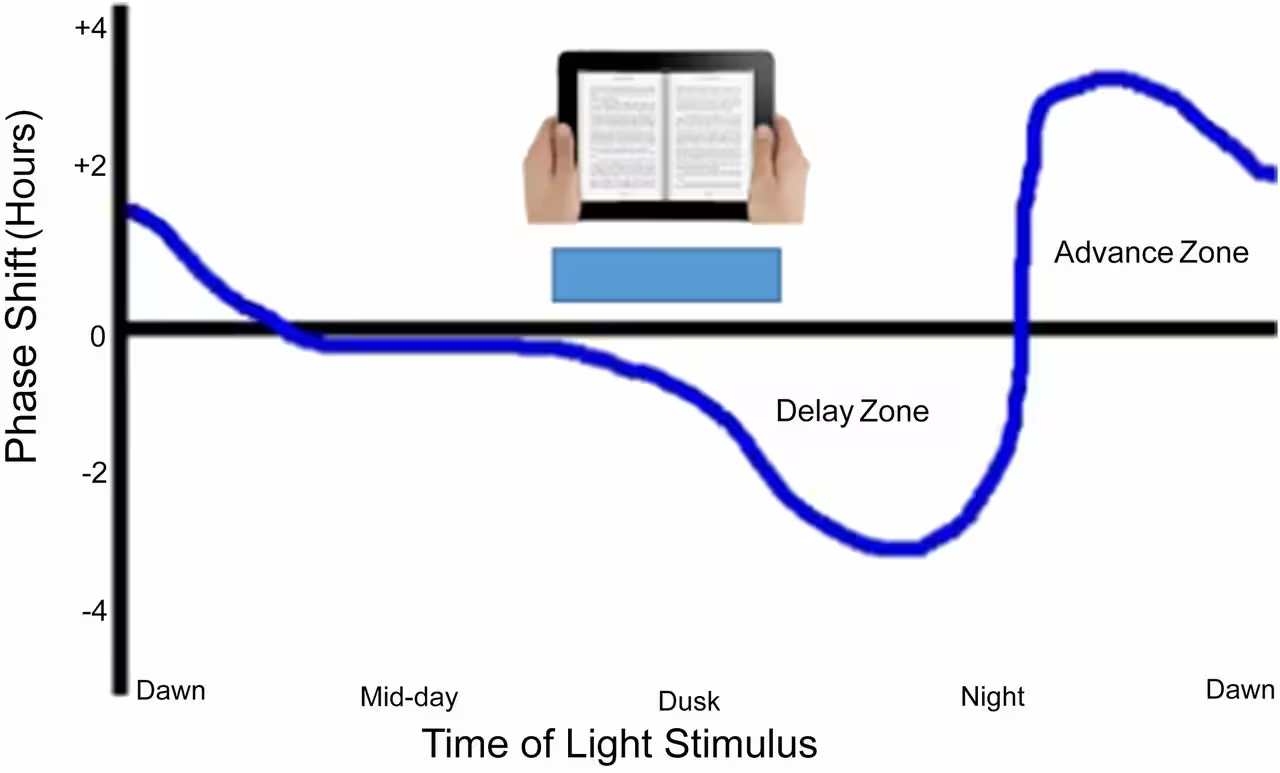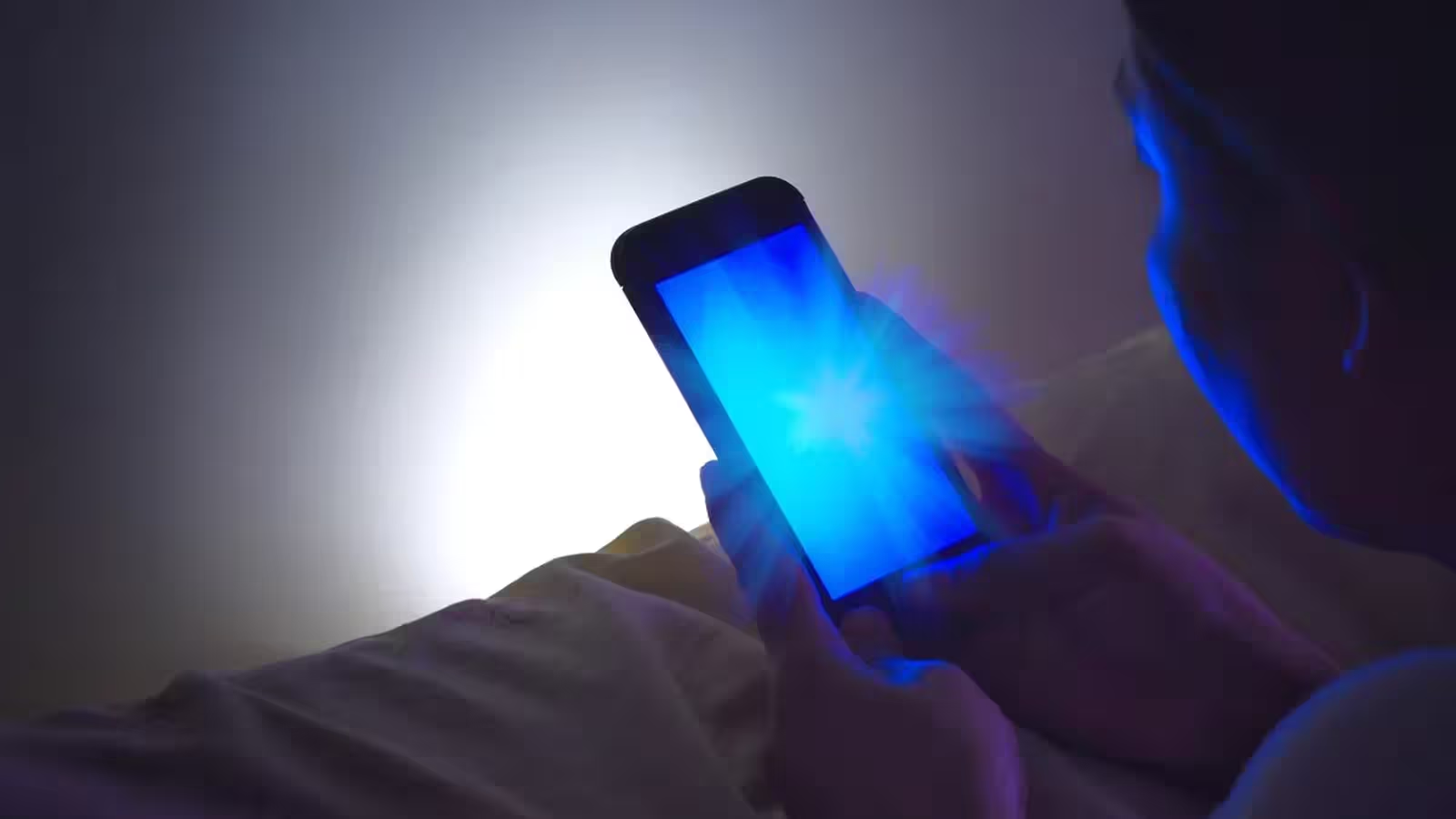6 Minutes
With a surge in screen time, from smartphones to LED room lighting, exposure to blue light has become a significant concern for our nightly rest. As modern lifestyles increasingly revolve around digital devices, scientists and health professionals are sounding the alarm about blue light's impact on sleep quality and overall well-being. While once limited to sunlight, blue light now dominates the evening hours inside our homes, quietly influencing the body’s biological clock in ways that can affect both physical and mental health.
What is Blue Light?
Blue light is a high-energy, short-wavelength form of visible light, typically ranging from 450 to 495 nanometers, though some definitions expand this range from 380 to 500 nanometers. Naturally present in sunlight, blue light plays a pivotal role in synchronizing our circadian rhythm—the internal 24-hour clock governing sleep, wakefulness, and hormonal cycles.
However, blue light isn't limited to the sun. Artificial sources, particularly LED lighting and digital screens (smartphones, tablets, laptops, and TVs), also emit substantial amounts of blue light. What sets blue light apart is its potent effect on alertness, hormone levels, and sleep cycles, especially when exposure occurs late in the day.
How Blue Light Disrupts Your Sleep
The circadian rhythm is sensitive to environmental cues, with light acting as its primary regulator. Among all wavelengths, blue light has the strongest effect on retinal photoreceptors responsible for sending wakefulness signals to the brain. During the day, blue light helps boost alertness, enhances mood, and improves cognitive function—effects that are positive and necessary for daily productivity. As night falls, reduced light signals the body to produce melatonin, the hormone that promotes sleep.
Unfortunately, ongoing exposure to blue light after sunset, especially from device screens, confuses this natural process. Research from Harvard University confirms that blue light suppresses melatonin production more than any other type of visible light, delaying sleep onset and diminishing overall sleep quality. The brain, tricked into thinking it’s still daytime, remains alert at precisely the wrong moment.
Further studies, such as those published in PNAS, reveal that people using smartphones before bed not only fall asleep later but also experience less deep sleep and increased daytime fatigue. Chronic disruption of the circadian rhythm, particularly through regular nighttime blue light exposure, can shift your internal clock by hours and is linked to metabolic disturbances and even mood disorders like depression.

Key Findings From Recent Research:
- Blue light exposure before sleep delays melatonin secretion.
- Nighttime screen time leads to later sleep onset and less restorative sleep stages.
- Insufficient deep sleep impacts cognitive performance and elevates health risks.
Main Sources of Blue Light in Modern Life
Besides sunlight, the majority of blue light exposure now comes from man-made sources. According to experts at the University of California, Davis, LED and LCD technology dominates artificial blue light emissions. These energy-efficient solutions, widely used in both residential lighting and display screens, favor ‘cool’ light spectrums that maximize brightness but can unintentionally sabotage our sleep physiology.
Devices and fixtures commonly associated with high blue light output include:
- Displays: Smartphones, tablets, laptops, computer monitors, and televisions
- Lighting: LED and fluorescent bulbs, especially those labeled as ‘cool white’
- Wearables & Digital Gadgets: Smartwatches, e-readers (without night mode), and gaming consoles
Managing Blue Light Exposure for Better Sleep
There’s encouraging news: You don’t have to ditch technology to enjoy restful sleep. Instead, integrating simple science-backed solutions into your evening routine can greatly reduce the risks. Here’s how you can minimize blue light’s impact for a more rejuvenating night:
1. Activate Blue Light Filters
Most modern smartphones, tablets, and computers now include built-in blue light filtering modes—commonly called ‘Night Shift,’ ‘Night Light,’ or ‘Comfort View.’ Enabling these features or installing specialized apps (such as f.lux for desktops) significantly decrease blue light output after dark. Compared to unfiltered screens, these tools can help regulate melatonin and align your circadian clock more closely with natural light cycles.
2. Try Blue Light Blocking Glasses
Specialized eyewear with amber or orange-tinted lenses is designed to block up to 90% of blue light emissions, making them ideal for prolonged screen users or gamers. Compared with standard clear lenses, these glasses are especially effective in the evenings, filtering disruptive wavelengths while allowing other colors to pass through for natural vision. Some brands offer anti-reflective coatings and stylish designs suited for everyday use.
3. Opt for Warm Lighting Solutions
Replace cool-toned LED bulbs in your bedroom or living areas with warm white or dimmable lighting. Smart home lighting systems often let you schedule a gradual color temperature shift as bedtime approaches, encouraging natural melatonin production and enhancing sleep readiness.
4. Create a Regular Sleep Schedule
Consistent sleep and wake times foster stronger circadian rhythm resilience, making the body less susceptible to ambient light disruptions. Prioritize winding down at least an hour before bed by avoiding all screens and engaging in relaxing activities—reading a printed book, meditation, or light stretching.
5. Use Sleep Masks for Extra Protection
Where eliminating all light is not practical—such as in shared living spaces or dorms—a high-quality sleep mask offers a simple, effective way to block any residual blue light that may interfere with sleep onset.
Advantages and Comparisons of Blue Light Management Solutions
While software-based blue light filtering is the most accessible solution for most users, blue light blocking glasses provide a physical barrier independent of device settings, making them preferable for users surrounded by multiple bright sources. Warm lighting alternatives not only help sleep but also add aesthetic value to living spaces, supporting both health and home ambiance. Smart lighting systems stand out for their programmable features, automatically adapting your environment to support healthy sleep rhythms—something static bulbs or standard glasses can't match.
Market Relevance and Trends
Blue light management is evolving from a niche wellness concern into a mainstream tech trend. Major consumer electronics brands now market blue light filtering as a key product feature, while the eyewear industry is rapidly innovating with stylish, high-performance filters. Smart home ecosystems increasingly offer adaptive lighting schedules, cementing blue light control as a central pillar of connected, healthy living. As remote work and digital entertainment continue to grow, demand for solutions that preserve sleep quality will remain strong, making blue light mitigation a priority for manufacturers and consumers alike.
Conclusion: Prioritize Your Digital Health
In our hyper-connected world, it’s easy to overlook how everyday tech habits impact sleep and well-being. By recognizing the pervasive influence of blue light and taking practical steps to limit nighttime exposure, tech enthusiasts and professionals alike can harness the benefits of digital innovation without sacrificing vital rest. Embracing these new habits isn’t just smart—it’s essential for a healthier, more productive digital future.
Source: health.harvard



Comments